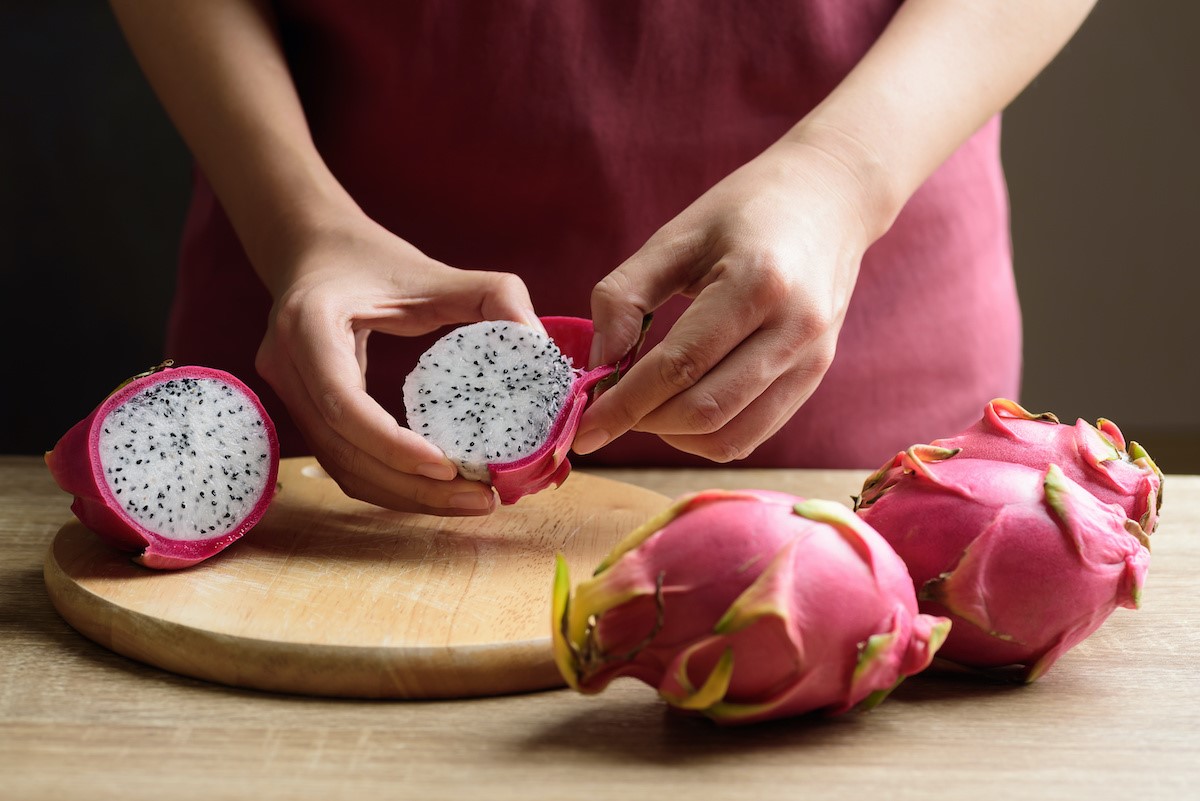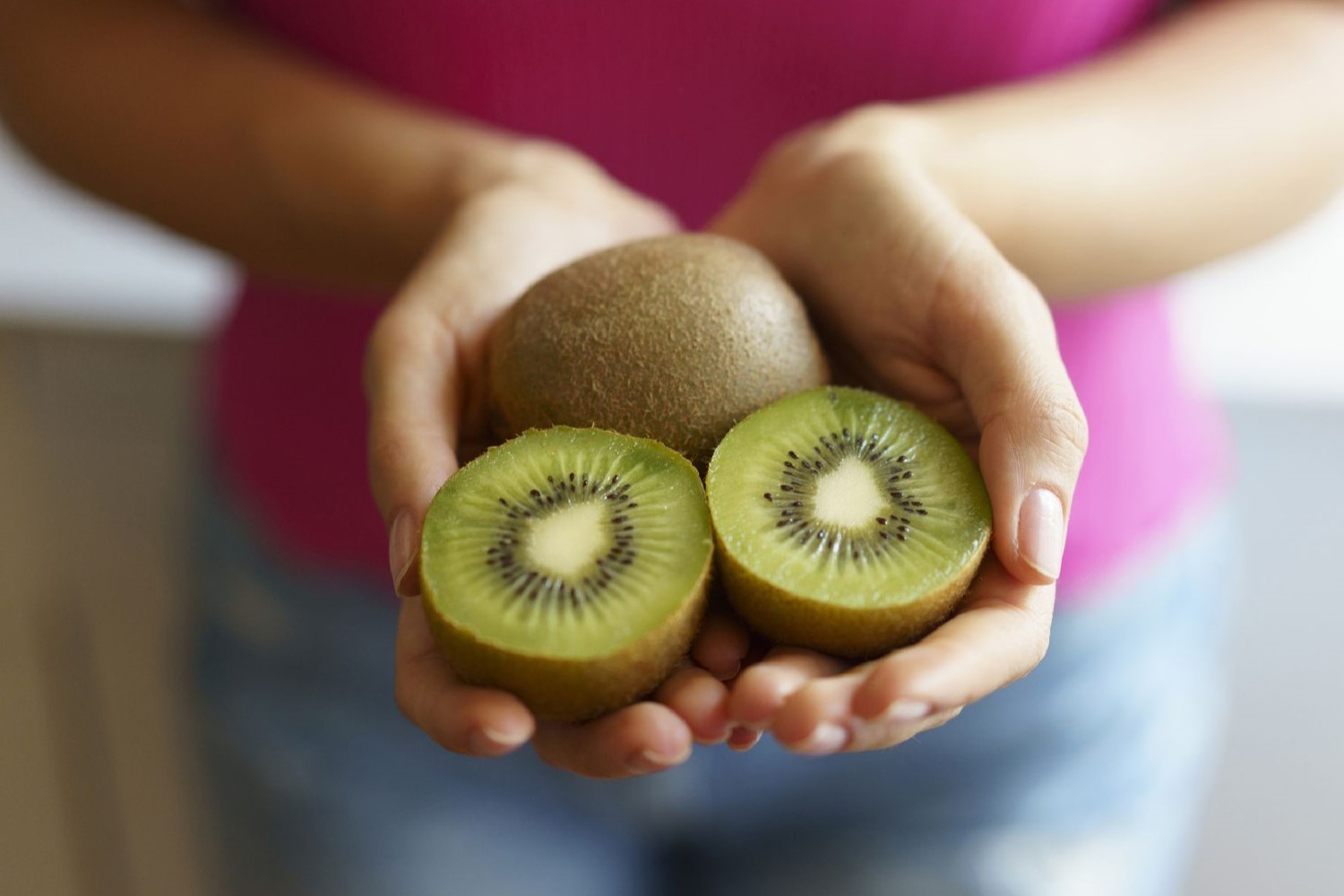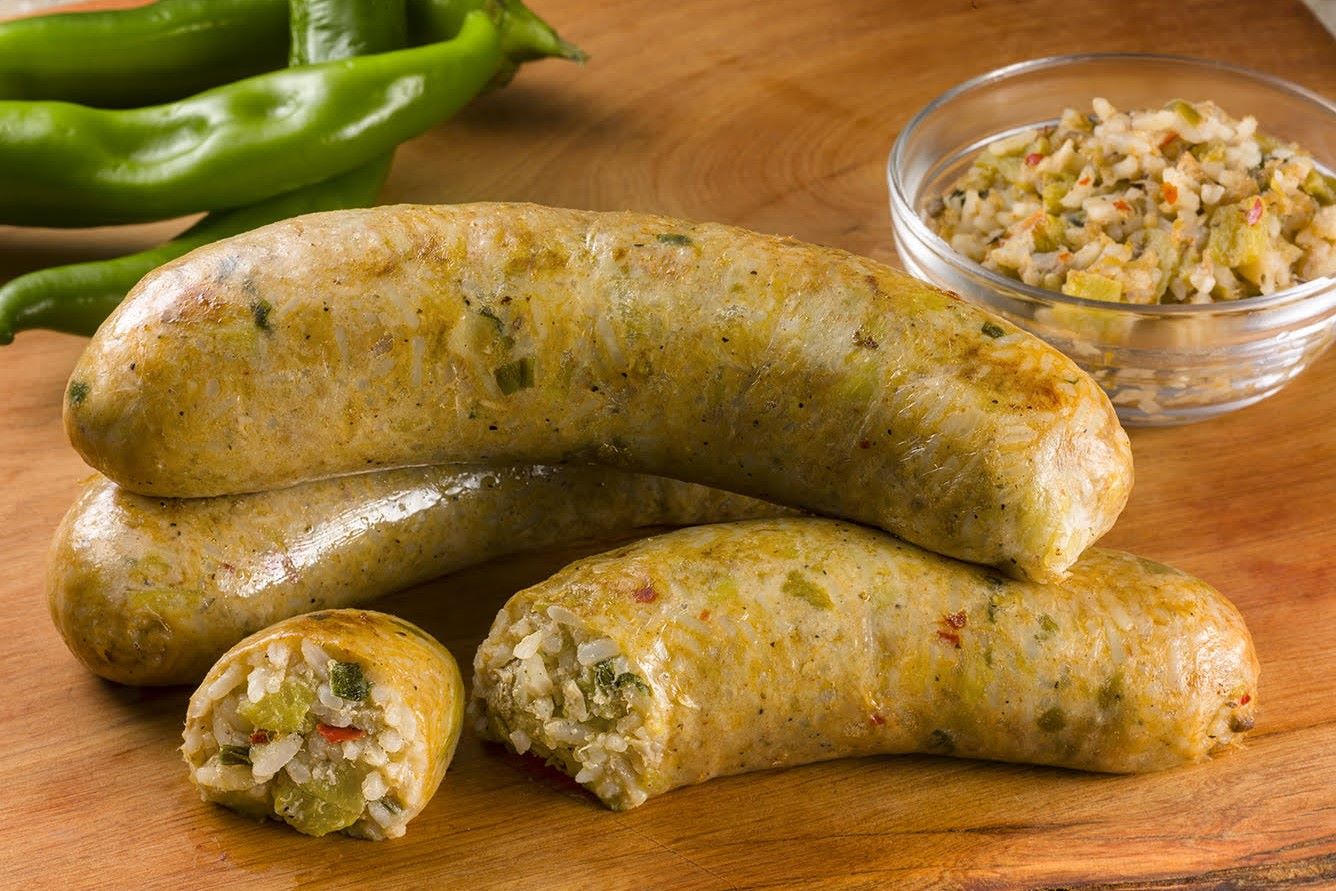Home>Food and Cooking>How To Peel A Kiwi


Food and Cooking
How To Peel A Kiwi
Published: February 29, 2024
Learn the best techniques for peeling a kiwi with our step-by-step guide. Discover helpful tips and tricks for food and cooking enthusiasts.
(Many of the links in this article redirect to a specific reviewed product. Your purchase of these products through affiliate links helps to generate commission for Noodls.com, at no extra cost. Learn more)
Table of Contents
Introduction
Kiwi, also known as the Chinese gooseberry, is a small, fuzzy fruit with vibrant green flesh and tiny black seeds. It is not only delicious but also packed with essential nutrients, including vitamin C, vitamin K, and dietary fiber. The unique sweet-tart flavor and soft texture make kiwi a popular choice for snacking, smoothies, fruit salads, and desserts.
Peeling a kiwi may seem like a daunting task due to its fuzzy skin and small size, but with the right technique, it can be a breeze. Whether you're a seasoned chef or a kitchen novice, mastering the art of peeling a kiwi will open up a world of culinary possibilities. By removing the skin, you can fully enjoy the succulent flesh of the fruit without any distractions.
In this comprehensive guide, we will walk you through the step-by-step process of peeling a kiwi with ease and precision. From gathering your supplies to slicing or enjoying the fruit as a whole, you'll discover the best practices for handling this delectable fruit. So, grab a ripe kiwi, and let's embark on a flavorful journey of peeling and savoring this delightful fruit.
Read more: How To Eat Kiwi
Step 1: Gather your supplies
Before diving into the process of peeling a kiwi, it's essential to gather the necessary supplies to ensure a smooth and efficient experience. Here's what you'll need:
-
Ripe Kiwi: Select a ripe kiwi with firm flesh and a slight yield when gently squeezed. Avoid overripe kiwis, as they may be too soft and challenging to handle during the peeling process.
-
Cutting Board: Use a stable cutting board to provide a secure surface for preparing the kiwi. This will prevent any accidental slips or injuries while handling the fruit and a knife.
-
Sharp Knife: Opt for a sharp paring knife or a chef's knife to make precise cuts. A sharp knife will effortlessly glide through the kiwi's skin and flesh, facilitating a clean and efficient peeling process.
-
Spoon: Grab a regular teaspoon or a sturdy grapefruit spoon with a serrated edge. The spoon will be used to scoop out the kiwi flesh after the skin has been removed.
-
Bowl (Optional): If you plan to slice the kiwi or use it in a recipe, have a bowl ready to hold the peeled fruit or its slices.
By assembling these supplies, you'll be fully equipped to tackle the task of peeling a kiwi with confidence and ease. With the right tools at your disposal, you can approach the process with precision and finesse, setting the stage for a delightful kiwi-peeling experience.
Step 2: Cut off the ends
To begin the kiwi peeling process, place the ripe kiwi on a stable cutting board. With your sharp knife in hand, carefully slice off both ends of the kiwi. This step serves multiple purposes, making it a crucial starting point for the peeling process.
By removing the ends, you create flat surfaces that stabilize the kiwi, preventing it from rolling as you proceed with the next steps. This stability is essential for maintaining control over the fruit and ensuring safe, precise cuts throughout the peeling process.
Additionally, cutting off the ends exposes the flesh just beneath the skin, allowing you to gauge the thickness of the fruit's skin. This visual cue will guide your subsequent cuts, ensuring that you remove the skin while minimizing the loss of the flavorful flesh.
As you slice through the ends, aim to remove as little flesh as possible, focusing primarily on the skin. This mindful approach helps maximize the amount of edible fruit while minimizing waste, allowing you to fully enjoy the kiwi's succulent interior.
Once the ends have been neatly trimmed, take a moment to inspect the kiwi. You should now have a stable, upright fruit with flat ends, ready for the next step in the peeling process. With the ends removed, you've set the stage for seamlessly transitioning to the subsequent steps, bringing you closer to revealing the vibrant green flesh of the kiwi in all its glory.
With the ends expertly trimmed, you're now ready to move on to the next step, where you'll employ a simple yet effective technique to prepare the kiwi for effortless peeling.
Step 3: Insert a spoon
With the ends of the kiwi expertly trimmed, the next step in the peeling process involves a simple yet ingenious technique: inserting a spoon. This method is highly effective and minimizes the risk of damaging the delicate flesh while ensuring a smooth and effortless peeling experience.
To begin, hold the kiwi firmly on the cutting board with one hand, ensuring that it remains stable and stationary. With your other hand, take a regular teaspoon or a sturdy grapefruit spoon and position it at the base of the kiwi, where the flat end meets the skin. The goal is to gently insert the edge of the spoon just beneath the skin, between the flesh and the peel.
Once the spoon is in place, begin to glide it along the curve of the kiwi, following the natural contour of the fruit. Apply gentle pressure to separate the skin from the flesh, allowing the spoon to do the work as it navigates around the entire circumference of the kiwi. The smooth, rounded edge of the spoon serves as a gentle yet effective tool for loosening the skin without piercing or damaging the flesh beneath.
As you continue to guide the spoon around the kiwi, you'll notice the skin gradually detaching from the flesh, revealing the vibrant green interior. The spoon's edge effortlessly lifts the skin away from the fruit, creating a clean and seamless separation. This method is particularly advantageous for those who prefer to minimize direct contact with the kiwi's fuzzy skin, as the spoon provides a barrier between the skin and your hands.
Throughout this process, maintain a steady and controlled motion, ensuring that the spoon glides smoothly and evenly along the kiwi's surface. By exercising patience and precision, you'll achieve a consistent and uniform peeling action, resulting in a beautifully exposed kiwi ready for the final steps of preparation.
As you complete the circuit around the kiwi, take a moment to appreciate the satisfying progress made thus far. The skin should now be fully loosened and ready for effortless removal, thanks to the gentle and effective technique of using a spoon to separate it from the luscious fruit within.
With the skin expertly loosened, you're now poised to seamlessly transition to the subsequent step, where you'll complete the peeling process and unveil the tantalizing green flesh of the kiwi.
Step 4: Rotate and remove the skin
With the kiwi's skin expertly loosened using the spoon technique, the next pivotal step involves rotating and removing the skin to reveal the vibrant green flesh within. This step requires finesse and precision to ensure that the skin is cleanly separated from the fruit, allowing you to fully savor the succulent interior.
To begin, hold the kiwi gently but securely with one hand, ensuring a stable grip as you prepare to rotate the fruit. With your other hand, grasp the spoon that was used to loosen the skin, maintaining a firm yet gentle hold. Position the spoon at the top of the kiwi, where the skin meets the exposed flesh, and begin to rotate the fruit in a smooth, controlled motion.
As you rotate the kiwi, continue to guide the spoon along the edge of the skin, maintaining a consistent and deliberate movement. The goal is to gradually peel back the skin as the kiwi completes a full rotation, allowing the spoon to separate the skin from the flesh with precision. This method ensures that the skin is cleanly and evenly removed, unveiling the tantalizing green fruit beneath.
Exercise patience and attentiveness as you rotate the kiwi, paying close attention to the progress of the peeling action. The spoon should effortlessly glide along the skin, gently lifting it away from the flesh without causing any damage or loss of the fruit's delicate interior. By maintaining a steady and controlled rotation, you'll achieve a seamless and uniform peeling process, resulting in a beautifully exposed kiwi ready for the final steps of preparation.
As the kiwi completes its rotation, take a moment to appreciate the satisfying progress made thus far. The skin should now be fully separated from the flesh, leaving behind a pristine, naked kiwi ready to be enjoyed in its purest form. The removal of the skin unveils the luscious green flesh, setting the stage for the final step in the peeling process.
With the skin successfully removed, you're now poised to seamlessly transition to the subsequent step, where you'll complete the peeling process and prepare the kiwi for slicing or immediate consumption.
Read more: How To Cut A Kiwi
Step 5: Slice or eat as desired
With the kiwi expertly peeled and its vibrant green flesh fully revealed, you now have the freedom to explore a variety of delightful options for enjoying this delectable fruit. Whether you prefer to savor the kiwi in its natural form, incorporate it into a refreshing fruit salad, or use it as a vibrant garnish for desserts and beverages, the choice is yours. Here are some enticing ways to slice or indulge in the freshly peeled kiwi:
Slicing the Kiwi:
If you plan to incorporate the kiwi into a fruit salad, create an eye-catching fruit platter, or simply enjoy it in neatly sliced portions, the following steps will guide you through the slicing process:
-
Steady the Kiwi: Place the peeled kiwi on the cutting board, ensuring that it remains stable and secure.
-
Uniform Slices: With a sharp knife, carefully slice the kiwi into uniform rounds or quarters, depending on your preference. Aim for consistent thickness to enhance the visual appeal of the slices.
-
Serve or Store: Arrange the sliced kiwi on a serving platter, incorporate it into a fruit medley, or store the slices in a sealed container for future use. Sliced kiwi adds a burst of color and flavor to various culinary creations, making it a versatile and delightful addition to any dish.
Enjoying the Whole Kiwi:
For those who prefer to savor the kiwi in its natural form, the peeled fruit can be enjoyed as a whole, providing a convenient and nutritious snack option. Simply hold the peeled kiwi by the flat ends and take a satisfying bite, allowing the sweet-tart flavor and juicy texture to tantalize your taste buds. Eating the whole kiwi offers a convenient and portable way to enjoy this nutrient-rich fruit on the go.
Incorporating Kiwi into Recipes:
The freshly peeled kiwi can serve as a vibrant and flavorful ingredient in a wide range of recipes, including smoothies, desserts, salsas, and more. Consider blending the peeled kiwi into a refreshing smoothie, layering it atop a decadent yogurt parfait, or incorporating it into a zesty fruit salsa to elevate your culinary creations. The versatility of peeled kiwi opens up a world of culinary possibilities, allowing you to infuse your dishes with a burst of color and a hint of tropical sweetness.
By embracing the art of peeling a kiwi and exploring the various ways to slice or indulge in this delightful fruit, you can elevate your culinary experiences and savor the vibrant flavors of nature's bounty. Whether enjoyed on its own, incorporated into recipes, or showcased as a visually stunning garnish, the peeled kiwi offers a delightful fusion of flavor, nutrition, and culinary creativity.
Read more: How To Peel A Pomegranate
Conclusion
In conclusion, mastering the art of peeling a kiwi opens up a world of culinary possibilities, allowing you to fully savor the succulent flesh of this delightful fruit without any distractions. By following the step-by-step process outlined in this comprehensive guide, you can confidently approach the task of peeling a kiwi with precision and finesse, transforming the fuzzy exterior into a pristine canvas for culinary exploration.
The journey begins with gathering the essential supplies, including a ripe kiwi, a stable cutting board, a sharp knife, and a spoon. These tools serve as your allies in the quest to unveil the vibrant green flesh of the kiwi, setting the stage for a seamless and enjoyable peeling experience.
Cutting off the ends of the kiwi not only stabilizes the fruit but also exposes the flesh just beneath the skin, providing a visual cue for the subsequent peeling steps. The strategic use of a spoon to gently loosen the skin from the flesh proves to be a highly effective technique, ensuring a smooth and effortless separation without compromising the delicate fruit within.
As the skin is expertly removed through a controlled rotation and gentle guidance, the kiwi's luscious green flesh is unveiled, ready to be enjoyed in its purest form or incorporated into a myriad of culinary creations. Whether sliced into uniform portions, enjoyed as a whole, or infused into tantalizing recipes, the freshly peeled kiwi offers a burst of tropical sweetness and essential nutrients, elevating your culinary endeavors with its vibrant flavors and visual appeal.
By embracing the versatility of peeled kiwi and exploring the myriad ways to savor and showcase this delectable fruit, you can infuse your culinary repertoire with a touch of tropical elegance and nutritional richness. From vibrant fruit salads to refreshing smoothies, the peeled kiwi serves as a versatile and delightful addition to a wide range of dishes, enhancing both the visual allure and the flavor profile of your culinary creations.
In essence, the process of peeling a kiwi transcends the simple act of removing its fuzzy skin; it embodies a journey of culinary discovery and creative expression. With each carefully executed step, you embark on a flavorful adventure, culminating in the revelation of the kiwi's vibrant green flesh, ready to tantalize your senses and inspire your culinary imagination. So, armed with the knowledge and techniques shared in this guide, embrace the art of peeling a kiwi and unleash the full potential of this remarkable fruit in your culinary endeavors.













